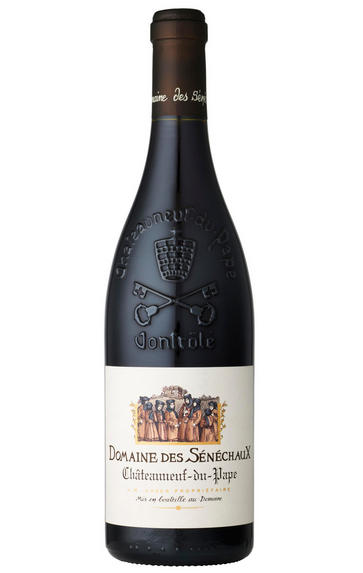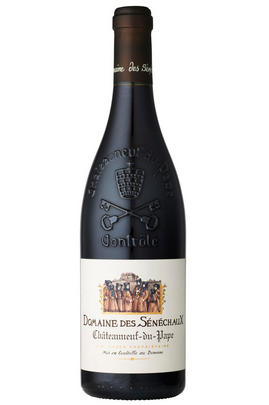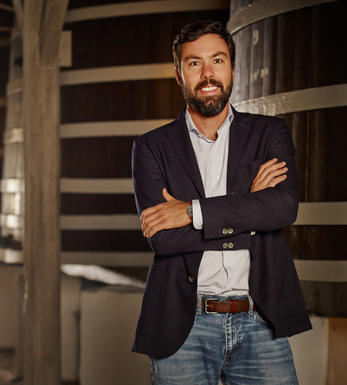
2006 Châteauneuf-du-Pape Rouge, Domaine des Sénéchaux, Rhône

Critics reviews
Jeb Dunnuck - 04/03/2016
About this WINE

Domaine des Senechaux
Domaine des Sénéchaux is an excellent example of how a large concern – in this case the Cazes family of Château Lynch-Bages in Bordeaux – should manage its purchase by investing as and where necessary. They have done this without forsaking the historical essence of the domaine, personified by longstanding régisseur Bernard Tranchecoste. Domaine des Sénéchaux dates from the 14th century, making it one of the oldest wineries of the region. It spans 26 hectares across Châteauneuf-du-Pape, 23 of which are planted with red varieties, the remainder white. Their main holdings are on the south-westerly slopes of the Bois Sénéchaux, just to the east of the town of Châteauneuf-du-Pape. Here, some of their Grenache vines are as old as 90 years old. Production remains very traditional, and they retain a simple two-wine offering. Largely, grapes are de-stalked and new oak is avoided in favour of concrete, foudres and second-use Bordeaux (Lynch Bages) barrels.

Châteauneuf-du-Pape
The most celebrated village of the Southern Rhône, Châteauneuf-du-Pape is the birthplace of the now indispensable French Appellation d’Origine Contrôlée system – imperfect though it may be. Compared to the Northern Rhône, the vineyards here are relatively flat and often feature the iconic galet pebbles – the precise benefits of which are a source of much debate. Minimum alcohol levels required by the AOC are the highest in France, but at 12.5% it is well below the natural generosity of Grenache, which only achieves its full aromatic potential when it is fully ripe and laden with the resultant high sugars. Syrah and Mourvèdre contribute the other defining elements in the blend, adding pepper, savoury spice and structure to the decadent Grenache. There are a further 10 permitted red grape varieties which can be used to adjust the “seasoning”. Of the five white varieties permitted, it is Grenache Noir’s sibling – predictably perhaps – Grenache Blanc, which dominates, though Roussanne shows a great deal of promise when handled well, notably at Château de Beaucastel.

Southern Rhône Blend
The vast majority of wines from the Southern Rhône are blends. There are 5 main black varieties, although others are used and the most famous wine of the region, Châteauneuf du Pape, can be made from as many as 13 different varieties. Grenache is the most important grape in the southern Rhône - it contributes alcohol, warmth and gentle juicy fruit and is an ideal base wine in the blend. Plantings of Syrah in the southern Rhône have risen dramatically in the last decade and it is an increasingly important component in blends. It rarely attains the heights that it does in the North but adds colour, backbone, tannins and soft ripe fruit to the blend.
The much-maligned Carignan has been on the retreat recently but is still included in many blends - the best old vines can add colour, body and spicy fruits. Cinsault is also backtracking but, if yields are restricted, can produce moderately well-coloured wines adding pleasant-light fruit to red and rosé blends. Finally, Mourvèdre, a grape from Bandol on the Mediterranean coast, has recently become an increasingly significant component of Southern Rhône blends - it often struggles to ripen fully but can add acidity, ripe spicy berry fruits and hints of tobacco to blends.


Buying options
Add to wishlist
Description
Domaine des Sénéchaux is currently the most exciting property in Châteaunuef du Pape. The reason? It has been purchased by Jean Michel Cazes of Lynch Bages fame in Bordeaux. Jean Michel and his son Jean Charles have recognised the outstanding quality of the terroir, with its trademark pudding stones and decorative old vines, and have adopted the clever strategy of consultation to ensure that the essence and personality of the wine is not fundamentally changed. As a result the wine is made in a similar way and its make up remains as before (65% Grenache, 15 % each of Syrah and Mourvèdre and a hint of both Cinsault and Counoise). Despite this, and maybe, paradoxically, because of it, the wine has improved virtually beyond recognition.The rich core of sweet fruit remains, but is now more concentrated and much more focused. The tannins are wonderfully woven, the aromatics infused with notes of chocolate and garrigue; the palate is profoundly satisfying. All in all very Châteauneuf Du Pape, but now from the top drawer; the Bordelais savoir faire subtly but memorably infused. The eponymous old men who adorn the label will have very good reasons to be pleased!
(Simon Field MW, BBR Buyer)
wine at a glance
Delivery and quality guarantee